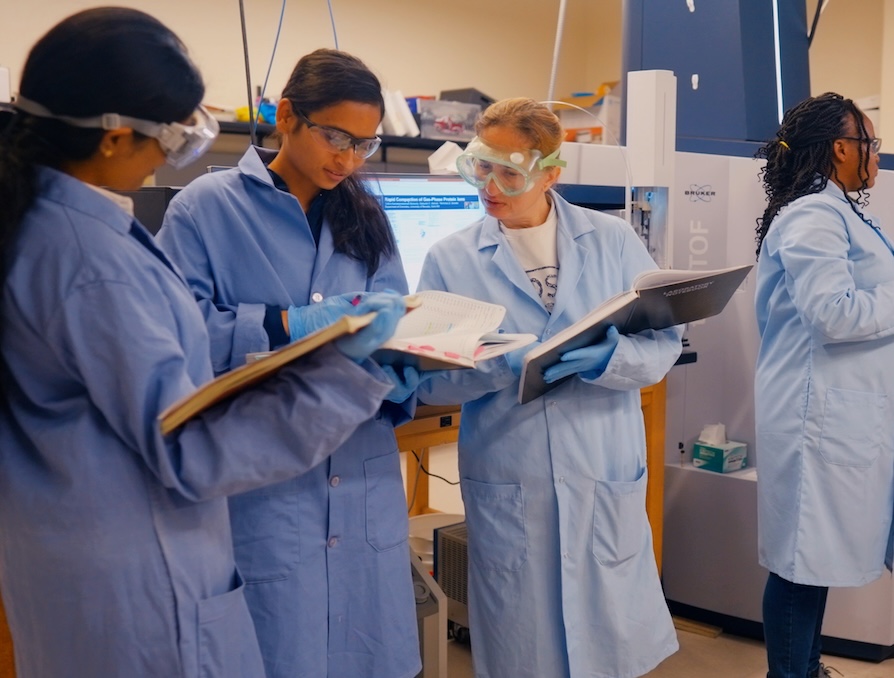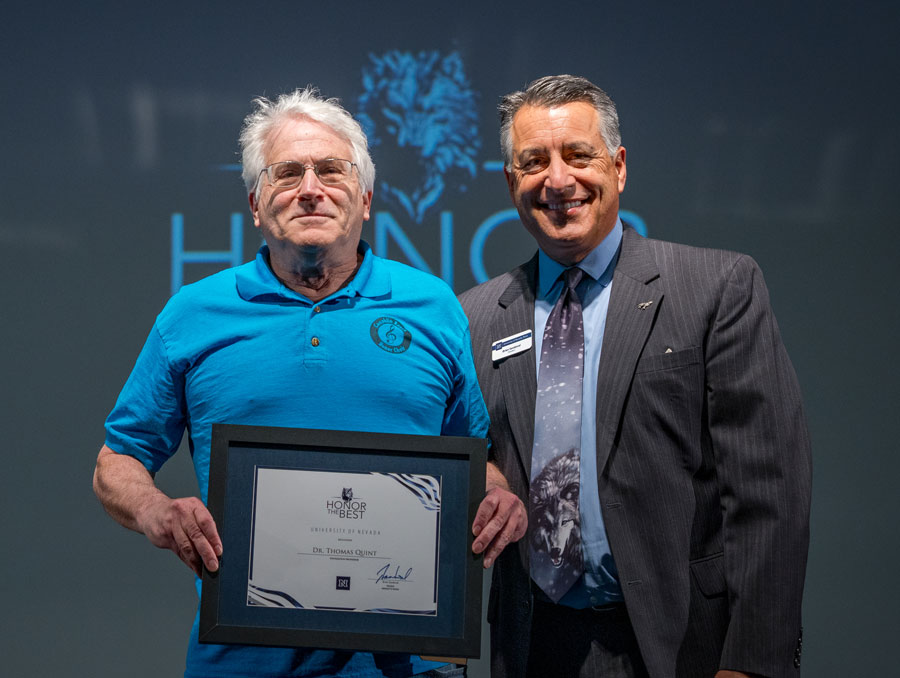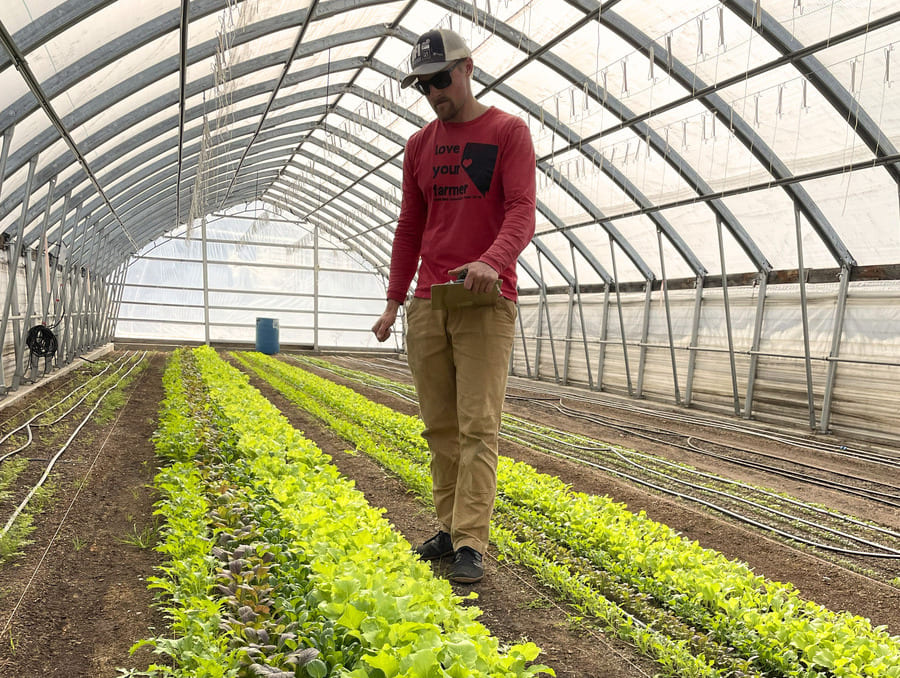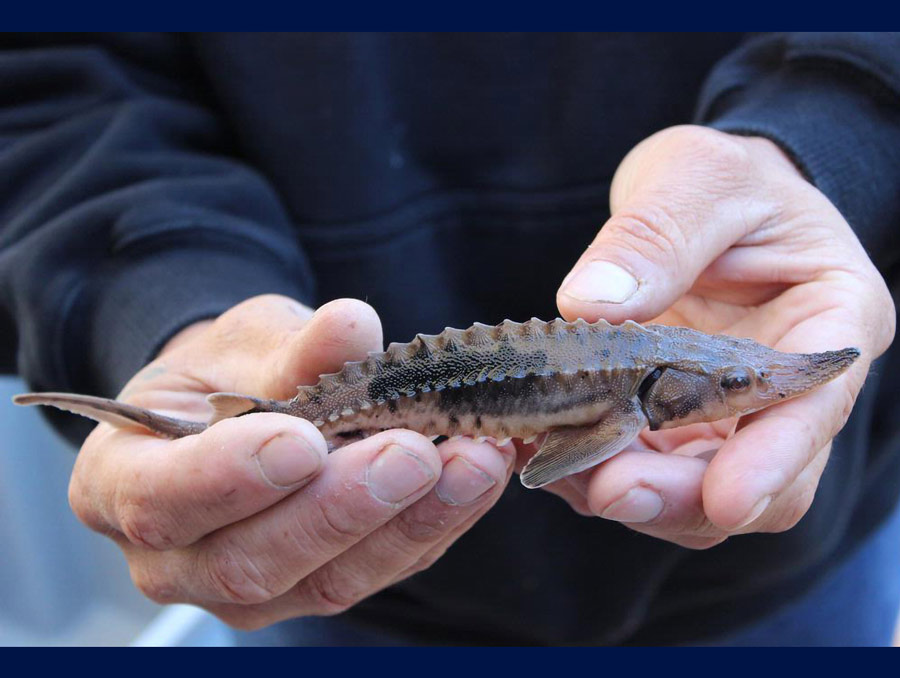From June 9 to 14, peat scientists gathered at the University of Nevada, Reno at Lake Tahoe to talk about peatland initiation. Julie Loisel, associate professor in the Department of Geography, organized the workshop as part of the TundraPEAT project supported by a grant she and her colleagues received in 2018 from the National Science Foundation. The workshop included attendees from nine countries, representing four continents, and about half of the attendees were students or postdoctoral scholars.
Peatlands are ecosystems that arise from wetlands that decompose into layers of rich soil. Most peatlands in North America exist in Canada and Alaska. As Earth’s global temperatures rise, scientists believe peatlands will extend further north, into the Arctic biome. Peatland initiation occurs over millennia but is an important process to understand now, as scientists work toward quantifying natural carbon sinks and sources and improving peatland and wetland restoration worldwide.
The scientists attending the workshop included modelers and fieldwork specialists. For Loisel, the workshop posed an opportunity for scientists to talk about data needs and to bring all the contributors together to work on a community article. There was designated time to collaborate on figures and text for a research article. Biology professor Sudeep Chandra also gave a talk about Lake Tahoe.
Since COVID, Loisel said it has been more difficult to entice colleagues to in-person workshops. Seeing an opportunity to make the workshop a little more inspiring, Loisel decided to host the workshop in Incline Village, at the University of Nevada, Reno at Lake Tahoe.

“I’m starting to think of workshops more as a science vacation,” Loisel said.
While most days were filled with hours of talks on peatland initiation modeling, paleo records, simulations, data needs and brainstorming, Loisel increasingly added time outside as the workshop progressed at Lake Tahoe, including beach excursions and hikes. There was even a visit to the Tahoe Meadows, where alumna Cody Reed ’20 Ph.D. (Ecology, Evolution and Conservation Biology), provided a tour. Reed now works as a senior meadow ecologist for the conservation nonprofit Point Blue. Perhaps unsurprisingly, the peat scientists managed to find peat in the meadows.
“Cody said, ‘I was looking at the satellite image of this meadow we’re in, and I think there’s a section that might be a peatland,’” Loisel recalls. “We took a 20-minute walk and of course we had the low-tech equipment we carry all the time, like bread knives, to cut into the soil.”
Sure enough, the group found peat. Loisel said it was a unique opportunity for the modelers in the group who usually don’t have an opportunity to get into the field to interact with peat.
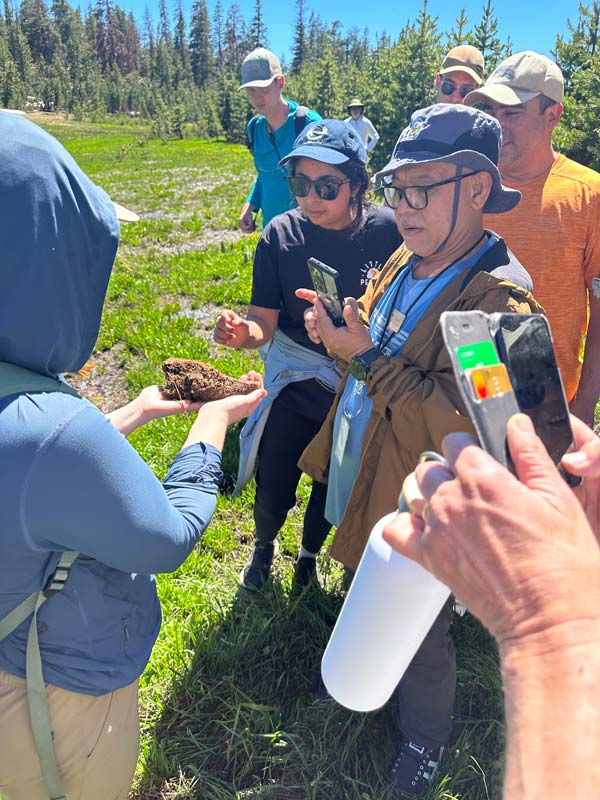
Loisel said the stunning location helped encourage more in-person attendance, and the outdoor activities provided breaks rather than a constant flow of information, allowing the scientists to think about what they were learning and to discuss it with their colleagues.
“You put scientists on a trail, and they’re going to talk about science,” Loisel said. “You don’t have to force it. I think that’s when we’re more productive.”
Loisel, a parent of two young children, also sought out opportunities to make the workshop more parent friendly. Parents were invited to bring their children to social events, so long as a spouse or other guardian could take care of the children for the rest of the day.
“It allowed some mothers that might not have come due to family reasons to be able to spend the day with us, then go back to their families at night,” Loisel said.
This was the first time she had tried to incorporate a more family-friendly approach into a workshop, and she said it worked well.
Loisel, who started working at the University in January, studies peatlands around the world, from Costa Rica to Antarctica. Loisel looks forward to learning more about the peatlands around Lake Tahoe.


